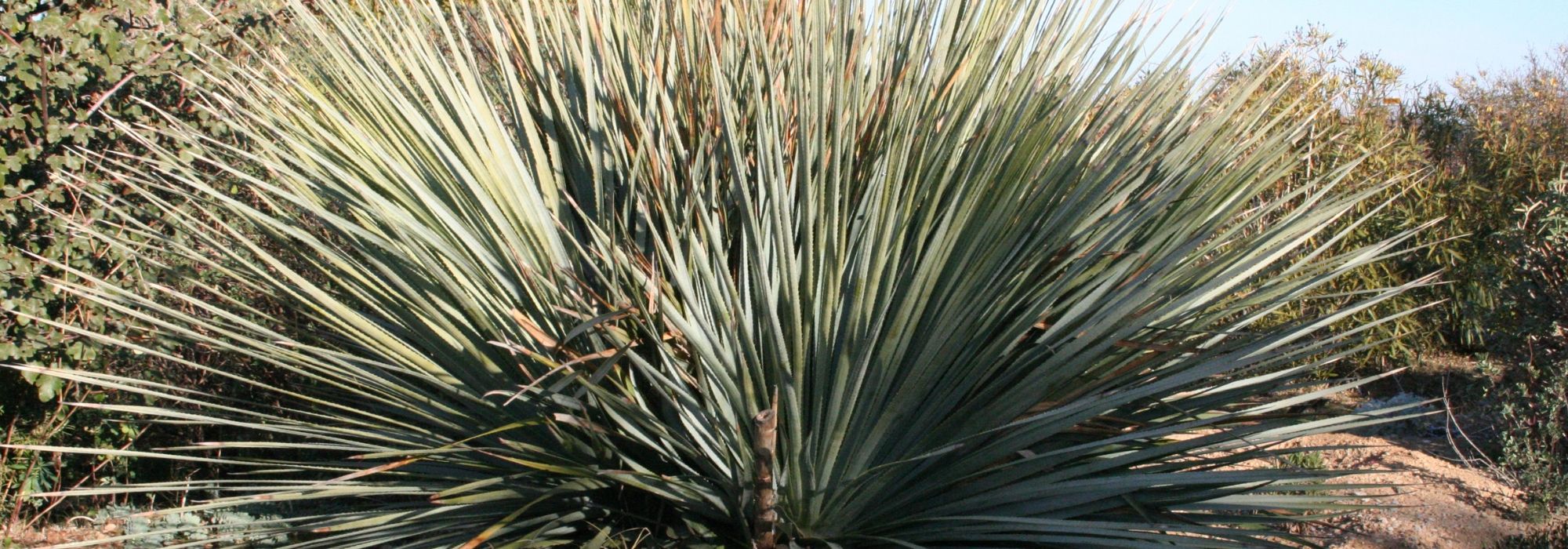
How to plant, grow and care for Dasylirion
Contents
Dasylirion in a nutshell
- Dasylirion is a plant of the deserts of North America and Mexico
- It is a very drought-resistant bush
- Dasylirion has very striking foliage and habit
- Although fairly hardy, it is vulnerable to excess moisture in winter in colder regions
- Above all, in our climates, it is a very attractive plant to place in a pot on a terrace
A word from our expert
Native to semi-desert regions of south-western South America and Mexico, Dasylirion is an original bush that will prove a valuable asset for a contemporary terrace or an urban garden, both very sunny, helping to create a Mediterranean atmosphere.
Because of its natural range, it is obviously very drought-resistant, requires no fertiliser or maintenance and remains of real interest year-round thanks to its evergreen foliage. Unfortunately, it has the drawbacks of its qualities and, although very hardy, it often suffers from excess moisture at the roots in colder regions.
It’s clearly a plant to adopt immediately in large pots in grey-blue tones echoing the foliage colour or, conversely, brighter tones for contrast. But let’s not confine Dasylirions to container growing, they can perfectly well be incorporated into a gravel bed or a large rockery in regions with a mild climate: southern parts of the country, coastal areas and even well-protected town gardens. Simply make sure to improve soil drainage.
Description and botany
Botanical data
- Latin name Dasylirion sp.
- Family Asparagaceae
- Common name Dasylirion
- Flowering June to August
- Height 180 cm
- Sun exposure sun
- Soil type all soil types, even poor but well-drained to dry
- Hardiness -15°C
Dasylirion belongs to family Asparagaceae and is native to rocky and semi‑desert areas of Mexico and the south‑west of United States (notably Texas). Genus includes eighteen different species. These are xerophytic bushes, that is capable of withstanding long periods of water deficit. Dasylirions are therefore perfectly suited to cultivation in a warm, dry Mediterranean climate.
Habit of the bush in its youth is limited to a sort of large radiant ball composed of narrow leaves that starts almost at ground level. With age, the mound is borne on a thin trunk that gradually grows and may eventually arch or lie down, giving the plant a particularly picturesque habit. As you will have understood, dasylirions sold with a well‑developed trunk are already quite old, which explains often steep price.
It is a rhizomatous plant whose root system is fragile and does not tolerate disturbance. Careful choice of planting site is therefore required because once in ground it will be very difficult to move without risk.
Foliage is evergreen. Leaves are numerous and relatively narrow, forming a rosette at top of trunk. They are fibrous, glabrous and armed with sharp, recurved thorns on the margins. Sometimes a wax covers leaves to reduce evapotranspiration.
Flowering may occur only after around ten years and only if all conditions are met: mature plants, warm temperatures and some humidity. Dasylirions therefore do not necessarily flower every year. Inflorescence unfolds in narrow panicles of small cream‑white flowers on a woody flower spike over 3 metres tall, sometimes much taller. Depending on species, the uppermost flowers on the spike can have tepals dark red, yellow or green. Male and female flowers are borne on separate individuals: the plant is dioecious. However, no need to worry, plant does not perish after flowering as is the case with agaves, for example.
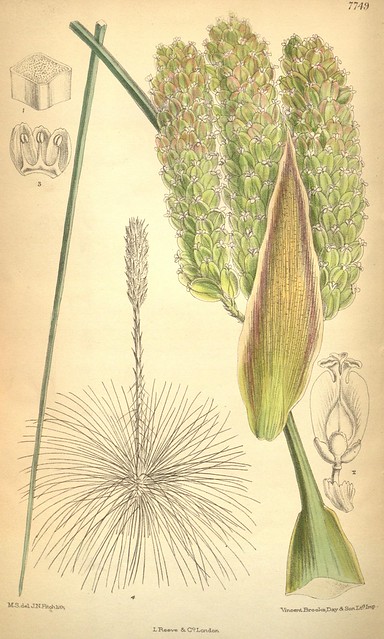
Dasylirion – botanical illustration
Fruit resulting from flower fertilization is a dry indehiscent fruit (does not open spontaneously at ripeness) and a three‑winged capsule. Seed is brown.
Growth is much faster in ground and much slower in a pot: allow 20–30 cm per year in ground versus only a few centimetres in a pot. Longevity can exceed a century if cultural conditions suit plant.
Here is a short presentation of most commonly encountered species:
Dasylirion acrotrichum (hardy to -16°C): bluish foliage but edged with numerous hooks.
Dasylirion berlandieri or Berlandier’s Dasylirion (hardy to -12°C): yellow flowers and dense foliage with narrow leaves up to 1.50 m long bearing sharp teeth. Trunk is thick and fairly short.
Dasylirion glaucophyllum (hardy to -16°C): yellow‑green flowers, narrow blue‑grey leaves bearing almost transparent spines.
Dasylirion longissimum (hardy to -15°C): dark‑red flowers, very narrow and pliable leaves. Lightest and most elegant of Dasylirions.
Dasylirion lucidum (hardy to -12°C): narrow leaves and less spiny than other dasylirions. Several leaf rosettes may develop on trunk.
Dasylirion serratifolium (hardy to -8°C): white flowers, glaucous and fairly broad leaves.
Dasylirion texanum (hardy to -18°C): cream‑white flowers, grey‑blue leaves.
Dasylirion wheeleri (hardy to -20°C): cream‑white flowers borne on a spike up to 6 metres tall, leaves broad and shorter than in other species, edged with orange thorns.
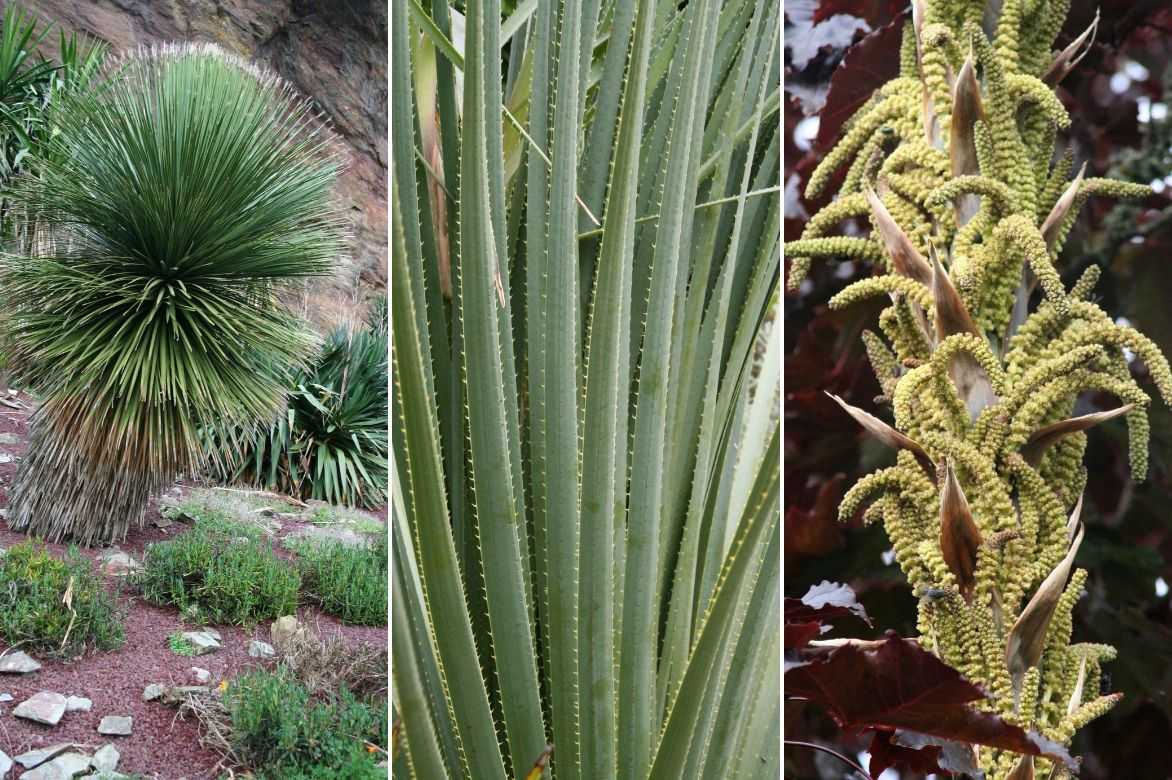
Dasylirion glaucophyllum: foliage and detail of flowering
Read also
10 hardy plants for an exotic dry gardenOur favourite varieties
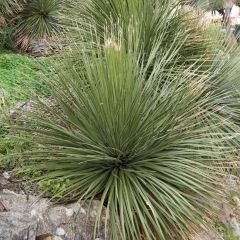
Dasylirion glaucophyllum - Sotol
- Flowering time July to September
- Height at maturity 2 m
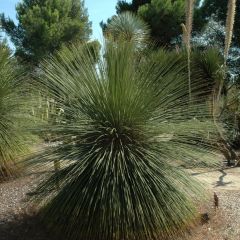
Dasylirion longissimum - Sotol
- Flowering time July to September
- Height at maturity 1,70 m
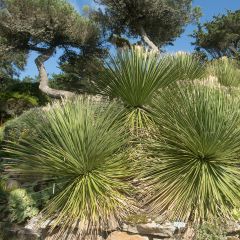
Dasylirion wheeleri - Sotol
- Flowering time July to September
- Height at maturity 1,70 m
Discover other Dasylirion
View all →Available in 2 sizes

Available in 2 sizes
Available in 2 sizes
Available in 1 sizes
Available in 1 sizes
Available in 1 sizes
Available in 1 sizes
Available in 1 sizes
Available in 1 sizes
Planting Dasylirion
Where to plant?
Dasylirions love sun and heat; without these they will eventually decline.
They need very well-drained soil to prevent stagnant water from causing root rot.
Planting in the ground should only be attempted in mild climates: USDA hardiness zones 7b, 8a, 9a, 10a. Elsewhere, only container growing should be considered.
Avoid walkways as the plant’s leaves are prickly and can scratch. Also, leaf latex is toxic.
When to plant?
Plant in spring or early summer, between April and July. Do not attempt planting in cold weather!
How to plant?
In the ground
- Re‑moisten the rootball by plunging the plant into water for a few minutes, drain and then remove from pot
- Dig a hole with twice the volume of the rootball
- Keep excavated soil and mix it with coarse sand, gravel or pumice to lighten the soil, especially if it is heavy
- Avoid placing a layer of gravel at the bottom of the hole to improve drainage as often advised; this actually increases water stagnation near the roots. Instead, add a few handfuls of potting compost to the base of the hole
- Place the rootball in the hole and backfill with the mixed soil (soil combined with sand and gravel)
- Firm the soil gently around the base of the plant
- Give a generous watering to reduce risk of air pockets between substrate and roots
- A mineral mulch is a good idea. It will help retain moisture without excess, protect from frost and remain aesthetically pleasing.
In a pot
- Choose a container large enough—at least three times the size of the rootball—because although the plant grows slowly it will reach an imposing size over time.
- Re‑moisten the rootball and remove the plant from its pot
- Use a free‑draining substrate: two thirds multipurpose compost and one third coarse sand
- Consider placing a good layer of gravel at the bottom of the pot to aid drainage (this is acceptable here as roots will not reach the base of the pot for some time; when they do, repot into a larger container)
- Place the Dasylirion in its new container and fill with substrate
- Give a thorough watering and place pebbles around the base: they look attractive and provide a mineral mulch that will protect the plant from frost and excessive evapotranspiration.
→ Also read: To grow a Dasylirion in a pot
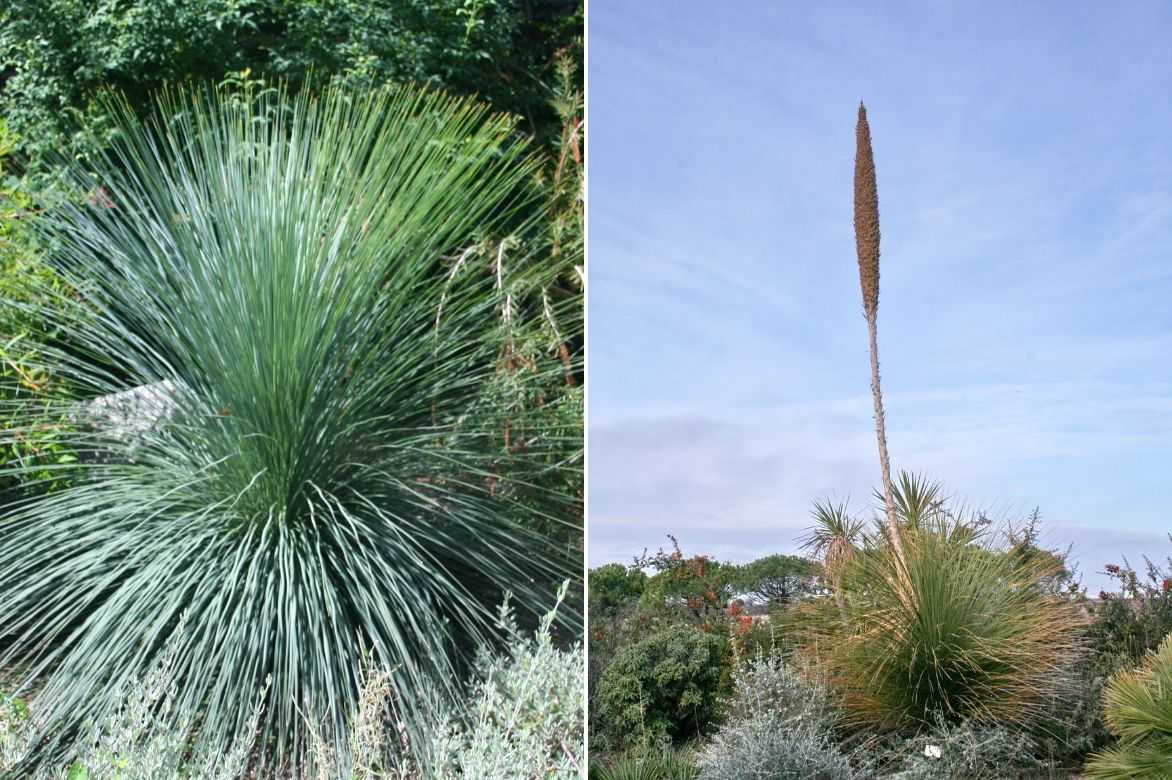
Dasylirion longissimum with its incredible flowering spike!
Read also
Agave: planting, growing, and caring forCare and maintenance
Care
In very dry periods, water occasionally at the base but always sparingly. This will help the plant retain attractive foliage and grow faster.
In winter, you can protect your Dasylirion if temperatures fall below -12 °C using horticultural fleece. On a terrace, wrap pot and plant together.
Find out more in our care sheet : How to overwinter a Dasylirion? Our tips to protect it from the cold.
Pruning
Dasylirion requires no pruning.
Diseases and pests
Dasylirion is not prone to pests. Its only concern can be root rot if soil is not sufficiently drained.
Propagation
Propagation is, alas, virtually impossible for the home gardener.
Producers multiply plants by sowing. But seeds are produced only if male and female young plants are nearby and in flower at the same time.
At a pinch, you can try removing suckers from the base of the stipe. But the operation is delicate: the removed rosette must retain a good part of the rootball, and it is not always successful.
Companion plants for Dasylirion
In a border of graphic, exotic and desert foliage
Le Dasylirion wheeleri will be wonderful on its own; accompanied by a tapetum of Delosperma ‘Wheels of Wonder Orange’ it will be simply magnificent. It can be paired with a few agaves, notably Agave americana, whose bluish tones are reminiscent of Dasylirion foliage. A superb Aloe striatula will sit well beside our two companions, with its very graphic habit but above all its flowering slightly reminiscent of kniphofias, in a radiant yellow‑orange that contrasts with the bluish tones of the other plants’ foliage while providing a link to the Delospermas. The impressive Phormium tenax ‘Variegatum’ also flowers in yellow tones but offers marginate cream‑white foliage.

An example of an association in an exotic‑desert bed: Dasylirion wheeleri, Delosperma ‘Wheels of Wonder Fire’ (or ‘Wheels of Wonder Orange’), Agave americana, Phormium tenax ‘Variegatum’
In a pot on a contemporary terrace
Le Dasylirion glaucophyllum is undoubtedly one of the most beautiful and will be particularly comfortable in a pot on your terrace alongside a dwarf palm with bluish foliage similar to Dasylirion: Chamaerops humilis ‘Compacta’. A large Agapanthus ‘White Heaven’ with white flowering and a very graphic habit, together with a pot of Kniphofias ‘Mango Popsicle’ bearing warm orange flowers, will complete the picture. Sober, elegant grey‑blue pots that harmonise with the plants will look superb.
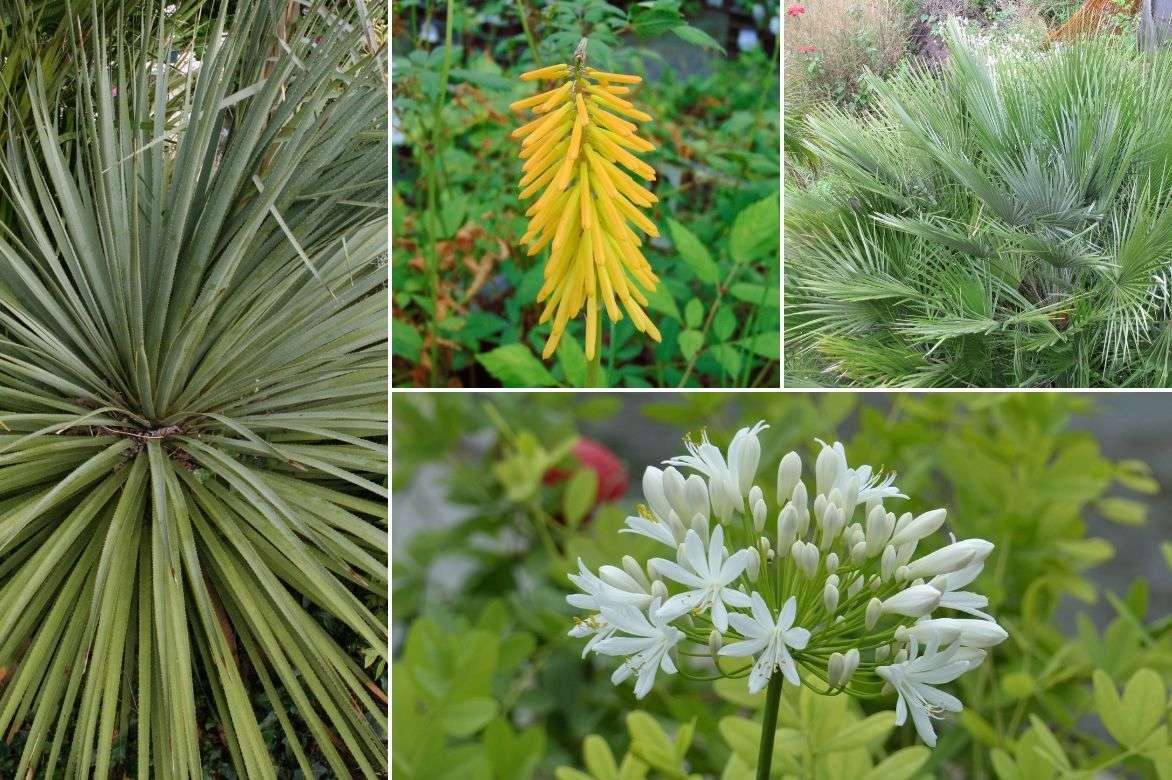
Another association idea: Dasylirion glaucophyllum, Kniphofia ‘Mango Popsicle’, Chamaerops humilis ‘Compacta’ and Agapanthus ‘White Heaven’
Did you know?
- Dasylirion was once food for Native Americans of the south-western deserts. They mainly ate rootstock.
- A fairly strong alcoholic drink called ‘sotol’ was distilled from cooked then fermented rootstocks.
- Leaves of Dasylirion have been widely used in Native American crafts for weaving baskets, making hats and making toys.
Useful resources
- Find all our Dasylirions in our online nursery.
- Want to create a desert-style garden at home? See our selection of 10 hardy plants for a dry, exotic garden.
- Unsure which Dasylirion to choose? Read our advice in Which Dasylirion to choose to enhance your garden?
- Diseases and parasitic organisms of Dasylirion : Identification, prevention and natural solutions
- Companion planting with Dasylirion : our ideas for creating successful combinations.
Frequently asked questions
-
My Dasylirion is not flowering. What's happening?
It is probably too young. Indeed, this plant only flowers after 10 to 15 years, mainly in Mediterranean regions. Moreover, depending on sunlight, warmth and humidity, it may only flower every three or four years.
- Subscribe!
- Contents
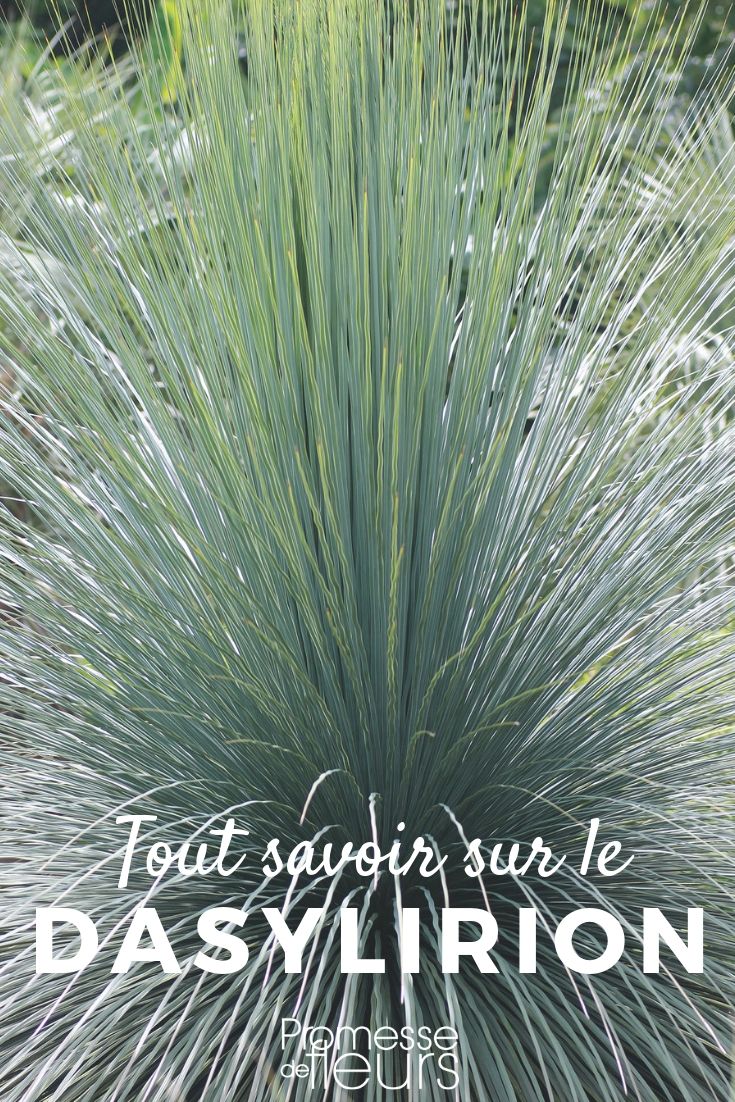
































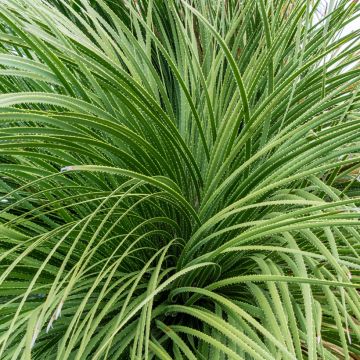
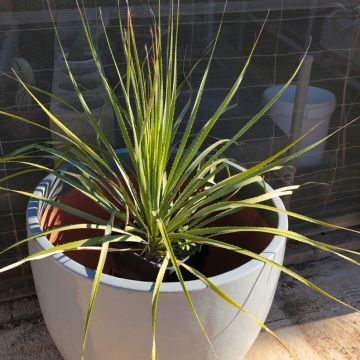
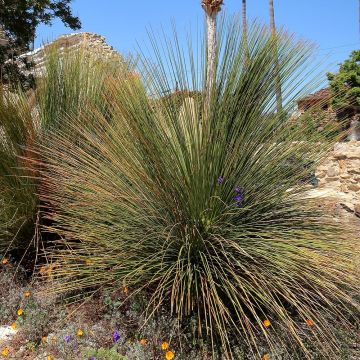
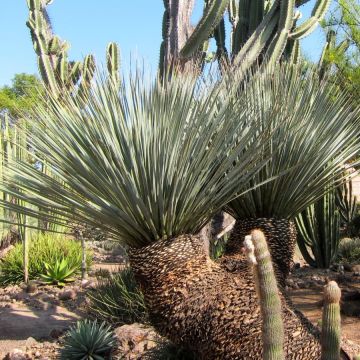
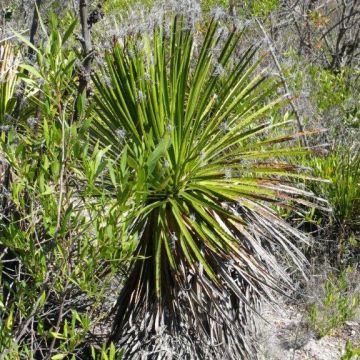
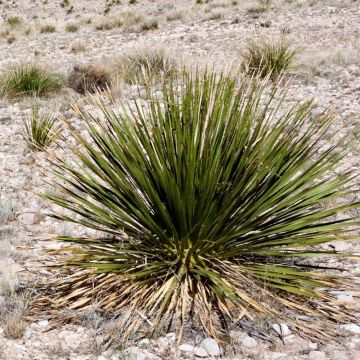

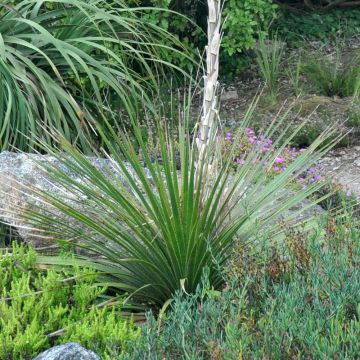
Comments